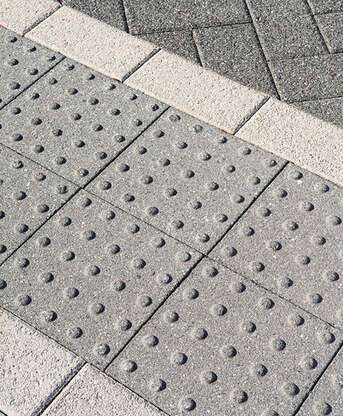Best Practices for Implementing Truncated Domes in Public Spaces (Automobiles & Vehicles - Other Auto Ads)

USNetAds > Automobiles & Vehicles > Other Auto Ads
Item ID 133706818 in Category: Automobiles & Vehicles - Other Auto Ads
Best Practices for Implementing Truncated Domes in Public Spaces | |
1. Understand Regulatory Requirements ADA Standards: Ensure compliance with ADA Accessibility Guidelines (ADAAG), which specify dimensions, spacing, and placement of truncated domes. Local Codes: Some states and municipalities may have additional requirements beyond federal guidelines. Always cross-check local building codes. 2. Strategic Placement Curb Ramps: Install truncated domes at the base of curb ramps where sidewalks intersect streets. Transit Platforms: Use along the edges of bus stops, train platforms, and light-rail stations to alert pedestrians of drop-offs. Pedestrian Crossings: Place domes at crosswalk entries to signal the transition from sidewalk to roadway. Parking Areas: Mark accessible routes from parking lots to building entrances. 3. Material Selection Durability: Choose materials such as concrete, stainless steel, composite, or polyurethane that can withstand heavy foot traffic and weather conditions. Slip Resistance: Surfaces should be non-slip, even in wet or icy conditions. Color Contrast: Use colors that contrast sharply with surrounding pavement (commonly safety yellow or brick red) for maximum visibility. 4. Proper Installation Techniques Alignment: Ensure domes are aligned perpendicular to the path of travel for consistent guidance. Secure Fastening: Follow manufacturer instructions for adhesives, bolts, or embedment to prevent loosening. Surface Flushness: Domes should be level with the surrounding surface to prevent tripping hazards. 5. Maintenance and Inspection Regular Checks: Inspect truncated domes periodically for wear, cracks, or fading. Timely Repairs: Replace damaged or missing domes promptly to maintain accessibility. Cleaning: Keep surfaces clean of dirt, ice, and debris to preserve tactile and visual effectiveness. 6. Community-Centered Design User Feedback: Engage with accessibility organizations and individuals with visual impairments to ensure installations meet real-world needs. Universal Design: Incorporate truncated domes as part of a holistic approach to inclusive urban design. Conclusion Truncated domes are more than just compliance tools—they are essential elements of inclusive, safe, and navigable public spaces. By following best practices in placement, materials, installation, and maintenance, municipalities and property owners can create environments that truly support accessibility for all.  | |
| Related Link: Click here to visit item owner's website (0 hit) | |
| Target State: Florida Target City : Fort Myers Last Update : Aug 22, 2025 6:07 AM Number of Views: 28 | Item Owner : Rocco A. Deluca Contact Email: Contact Phone: 4015616236 |
| Friendly reminder: Click here to read some tips. | |
USNetAds > Automobiles & Vehicles > Other Auto Ads
© 2025 USNetAds.com
GetJob.us | CANetAds.com | UKAdsList.com | AUNetAds.com | INNetAds.com | CNNetAds.com | Hot-Web-Ads.com | USAOnlineClassifieds.com
2025-10-18 (0.378 sec)